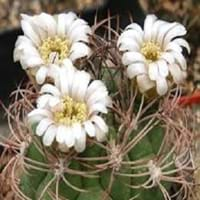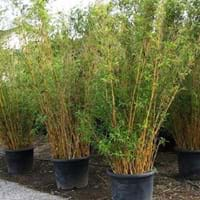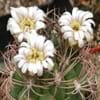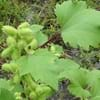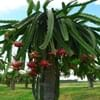Life Span
Perennial
Perennial
Origin
South America
China
Types
Gymnocalycium alboareolatum , Gymnocalycium amerhauseri , Gymnocalycium andreae
Greenstripe Vivax, Moso, Weavers Bamboo, Oldhamii
Number of Varieties
Not Available
Habitat
Desert, Semi desert
Subtropical climates, Wet Woods
USDA Hardiness Zone
9-12
8-12
AHS Heat Zone
12-1
12 - 7
Sunset Zone
13,21,22,23,24
H1, H2, 8, 9, 14, 15, 16, 17, 18, 19, 20, 21, 22, 23, 24
Habit
Upright/Erect
Clump-Forming
Minimum Width
Not Available
Flower Color
creamy white, Light Pink, Not Available, Pink
Pale White
Flower Color Modifier
Not Available
Bicolor
Fruit Color
Pink
Not Available
Leaf Color in Spring
Green, Not Available
Green
Leaf Color in Summer
Green
Light Green
Leaf Color in Fall
Green
Green
Leaf Color in Winter
Green
Green
Leaf Shape
Not Applicable
Acicular
Plant Season
All year
Spring, Summer, Fall, Winter
Sunlight
Full Sun, Part sun, Partial shade, Partial Sun
Full Sun, Partial Sun
Growth Rate
Medium
Very Fast
Type of Soil
Sand, Sandy
Loam, Sand
The pH of Soil
Neutral
Acidic, Neutral, Alkaline
Soil Drainage
Sandy
Well drained
Bloom Time
All year
Not Available
Tolerances
Dry Conditions, Dry soil, Full Sun, Heat Tolerance
Drought
Where to Plant?
Ground, Pot
Container, Ground
How to Plant?
Offsets
Grafting, Seedlings, Stem Planting, Transplanting
Plant Maintenance
Medium
Medium
Watering Requirements
Do not water excessively
Needs watering once a week, Use Mulches to help prevent water loss during hot and windy weather, Water Deeply
In Summer
Lots of watering
Lots of watering
In Spring
Moderate
Moderate
In Winter
Average Water
Average Water
Soil pH
Neutral
Acidic, Neutral, Alkaline
Soil Type
Sandy
Loam, Sand
Soil Drainage Capacity
Dry
Well drained
Sun Exposure
Full Sun, Part sun, Partial Sun
Full Sun, Partial Sun, Partial shade
Pruning
No need to prune
Do not prune during shooting season, Prune in late summer or fall, Remove damaged leaves
Fertilizers
All-Purpose Liquid Fertilizer, can go long without fertilizers
All-Purpose Liquid Fertilizer
Pests and Diseases
Mealy bugs, Root rot
Black sooty mold, Mealybugs, Mosaic viruses, Powdery mildew, pythogens, Stem rot
Plant Tolerance
Dry soil, Full Sun, Heat Tolerance
Drought
Flower Petal Number
Single
Single
Foliage Texture
Bold
Coarse
Foliage Sheen
Matte
Matte
Attracts
Ants, Mealybugs
Beetles, Bugs, Mites
Allergy
Unknown
allergic conjunctivitis, Asthma, Rash, Respiratory distress
Aesthetic Uses
Beautification, Cottage Garden, Ornamental use
Showy Purposes
Beauty Benefits
No Beauty Benefits
Not Available
Environmental Uses
Air purification, Food for animals, Food for birds, Food for insects
Agroforestry, Air purification, No fertilizer, pesticides, or herbicides needed
Medicinal Uses
No Medicinal Use
Aging, Anti-fungal, Antispasmodic, Digestive disorders, Obesity
Part of Plant Used
Bark, Fruits
Stem, Tree trunks
Other Uses
Decoration Purposes
Economic Purpose, Traditional medicine, Used As Food, Used for woodware, Used in Furniture, Used in paper industry
Used As Indoor Plant
Yes
No
Used As Outdoor Plant
Yes
Yes
Garden Design
Container, Houseplant, Rock Garden, Showy Tree
Feature Plant, Screening / Wind Break, Tropical
Botanical Name
GYMNOCALYCIUM
BAMBUSA beecheyana
Common Name
Chin Cactus
Beechey's Bamboo, Clumping Bamboo
In Hindi
Gymnocalycium
बांस
In German
Gymnocalycium
Verklumpung Bambus
In French
Gymnocalycium
clumping Bamboo
In Spanish
Gymnocalycium
clumping Bamboo
In Greek
Gymnocalycium
συσσώρευση μπαμπού
In Portuguese
Gymnocalycium
bambu aglutinação
In Polish
Gymnocalycium
zbicie bambus
In Latin
Gymnocalycium
clumping Bamboo
Phylum
Magnoliophyta
Magnoliophyta
Class
Magnoliopsida
Liliopsida
Order
Caryophyllales
Cyperales
Genus
Gymnocalycium
Bambusa
Clade
Angiosperms, Eudicots
Angiosperms, Commelinids, Monocots
Tribe
Trichocereeae
Bambuseae
Subfamily
Cactoideae
Bambusoideae
Number of Species
Not Available
Season and Care of Gymnocalycium and Clumping Bamboo
Season and care of Gymnocalycium and Clumping Bamboo is important to know. While considering everything about Gymnocalycium and Clumping Bamboo Care, growing season is an essential factor. Gymnocalycium season is All year and Clumping Bamboo season is All year. The type of soil for Gymnocalycium is Sand, Sandy and for Clumping Bamboo is Loam, Sand while the PH of soil for Gymnocalycium is Neutral and for Clumping Bamboo is Acidic, Neutral, Alkaline.
Gymnocalycium and Clumping Bamboo Physical Information
Gymnocalycium and Clumping Bamboo physical information is very important for comparison. Gymnocalycium height is 12.50 cm and width 8.00 cm whereas Clumping Bamboo height is 1,070.00 cm and width Not Available. The color specification of Gymnocalycium and Clumping Bamboo are as follows:
Gymnocalycium flower color: creamy white, Light Pink, Not Available and Pink
Gymnocalycium leaf color: Green and Not Available
Clumping Bamboo flower color: Pale White
- Clumping Bamboo leaf color: Green
Care of Gymnocalycium and Clumping Bamboo
Care of Gymnocalycium and Clumping Bamboo include pruning, fertilizers, watering etc. Gymnocalycium pruning is done No need to prune and Clumping Bamboo pruning is done Do not prune during shooting season, Prune in late summer or fall and Remove damaged leaves. In summer Gymnocalycium needs Lots of watering and in winter, it needs Average Water. Whereas, in summer Clumping Bamboo needs Lots of watering and in winter, it needs Average Water.
